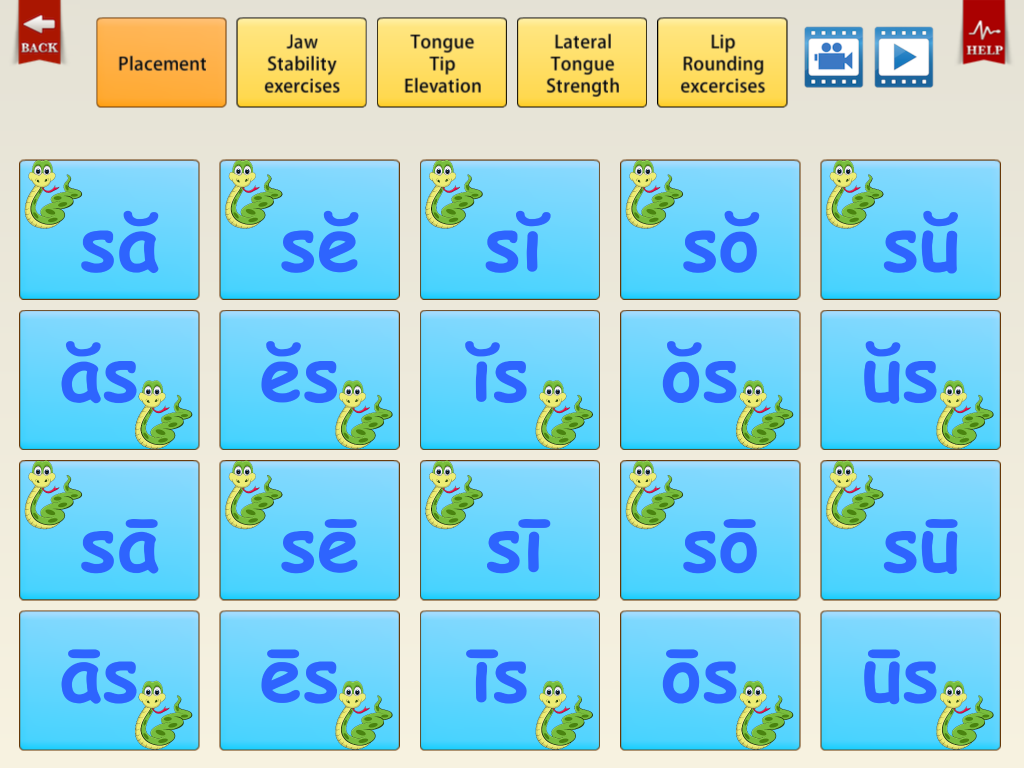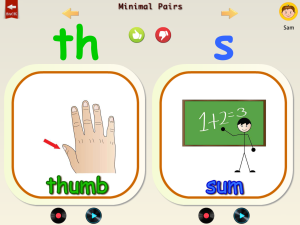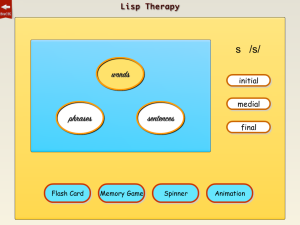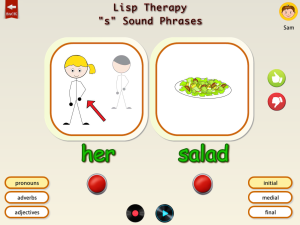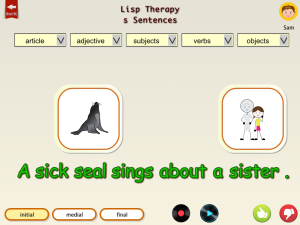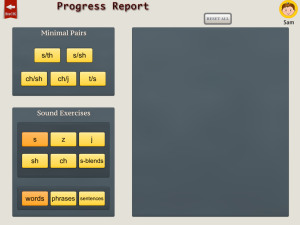
By Hallie Bulkin
If you follow my blog, then you know I don’t typically review therapy apps over here (that’s usually just over on Facebook) but I was gifted the Abitalk Lisp Therapy App and need to shout it’s praises from the roof tops!
There are a few things many speech therapists dread working on in therapy. One of those is treating a lateral and/or frontal lisp. Why do I say “dread?” Well, if we are being completely honest here, it is NOT easy for a child to learn to change any habit, especially one where we have to teach them to go against what feels natural and do what feels very forced. What am I talking about? Correcting a lisp, of course! This is why I will rarely work with a child that has a lisp until they turn 5 or 6. Before that age, it is frustrating and can take way too long to correct the lisp. If you have a frustrated child that can lead to a frustrated therapist. Our goal as therapists is to avoid frustration in therapy and create lots of success!
Up until this point, I have been using a very successful method for treating lisps, known as the butterfly procedure by Caroline Bowen, PhD. It is successful but can take a long time (often times a year or more) to remediate a lisp following this method. This is why I am SO excited for the new Abitalk Lisp Therapy app.
Let me SHOW YOU and TELL YOU why I am so excited. Are you ready?
- First, this was created by a Speech Pathologist, Heidi Maloney, and app developer, Emmy Chen, of Abitalk. Heidi really knows her stuff and included everything needed for successful treatment of lisps.
- Second, it is VERY user friendly.
- Third, it follows a progression that I would use in therapy (sound practice following or while working on oral motor, then onto minimal pairs, and finally word, phrases, sentences).
- Fourth, it is interactive.
- Fifth, it is engaging and the clients I have used it with this past week LOVE it and ask for it as soon as they returned to their therapy session!
Let’s walk through what you get with this app. I will point out more reasons I love this app as we go along…
After setting up your kiddo, you are taken to this page where you can decide which level you are ready to work at. With a new kiddo you would start with sound practice, which jumps us to our next picture.
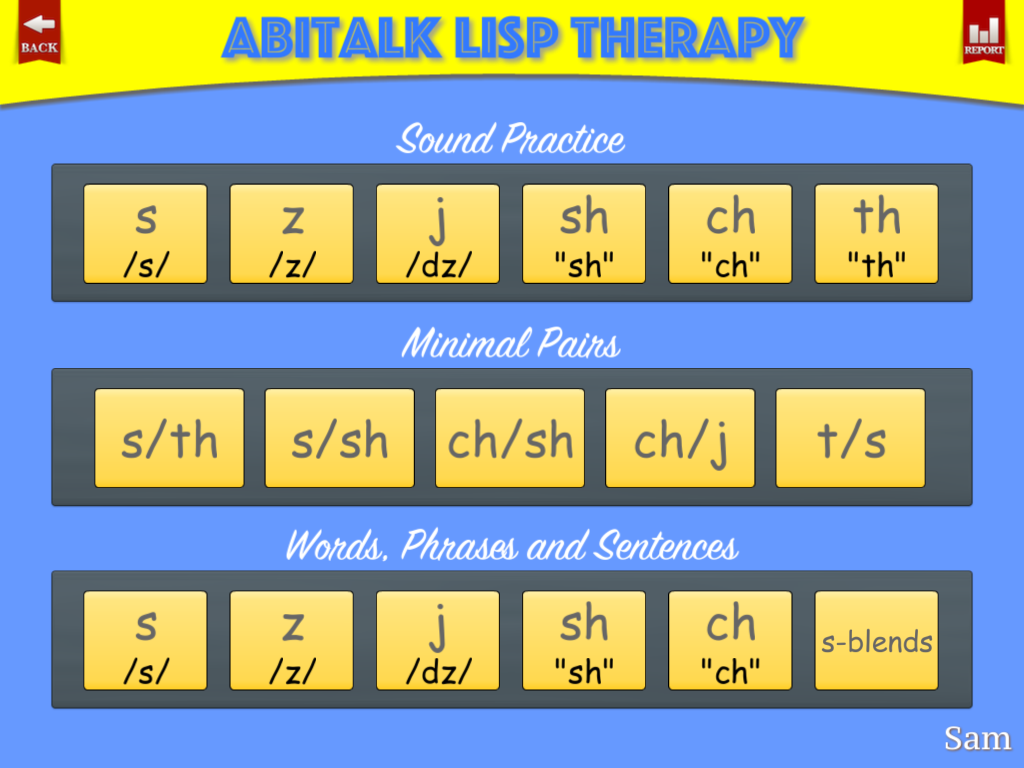
If starting with sound practice, it is a good idea to do an oral motor examination to check for strength and range of motion of the articulators (jaw, tongue, lips, etc). Why do you do this? Well you need to have a stable jaw, and a tongue that is strong enough to maintain it’s position to close off the sides of the tongue up against the teeth and direct air out the front of the mouth, but don’t worry about all that. I could go into more detail and get way more technical, or you can check out this app as they break it down for you, placement included, telling you EXACTLY what to do to achieve the strength and range of motion of the lips, tongue and jaw! And if that wasn’t awesome enough, they let you RECORD yourself/the child doing this so you can play it back and SEE how you look! iPads are a lot more fun than mirrors since they have the playback factor! Lastly, they focus on placement and a variety of ways to produce the target sound (e.g., the /s/ sound) next to different vowels. So make sure the child achieves this before moving on to minimal pairs and then words, phrases and sentences! AND at each level, of course you can work on the target sound in the beginning, middle and final position of words. This is how you KNOW a speech therapist had her hand in designing this app!
Here’s a pic of what the minimal pairs look like:
The options for the word level (flashcards, memory game, spinner and animation):
Phrases (see the little red dot below the words, you can click on that to spin the word and have a new word appear, the kids LOVE this!):
And sentences (which I particularly LOVE since you can create your own for each part of the sentence in a readily available drop down menu)
And last but certainly not least, there is a progress report for each child that you work with and save within the app. For privacy reasons, I created a fake kiddo, Sam, for this demo, so you will not see any progress here. The nice thing is it appears in categories so you can track progress in words, versus phrases, and so on.
If you would like to get this app for your speech therapy toolkit it is available to therapists, parents and anyone really. This is very straight forward and walks you through step by step how to treat the lisp. Enjoy!

With love,
Hallie Bulkin

